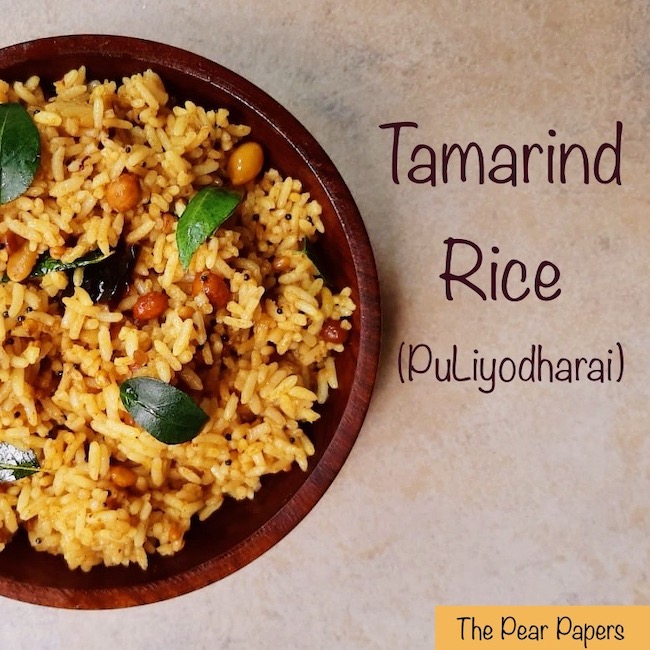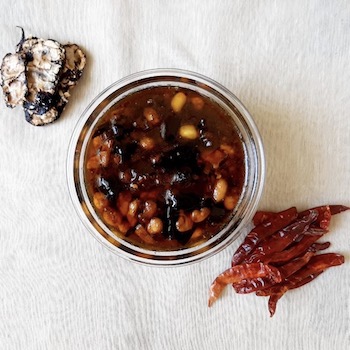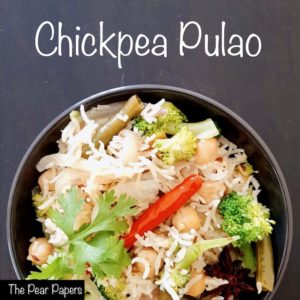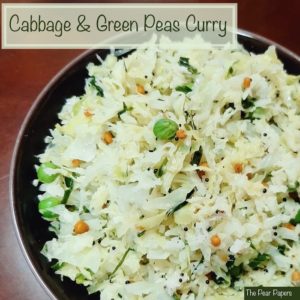
Puliyodharai (Tamarind Rice)
Puliyodharai is a tamarind based, tangy and spicy rice dish, famous in South Indian states. In Tamil, ‘Puli’ means tamarind and ‘ohorai’ means mixed rice. Each household has its own style of making puliyodharai, keeping the main ingredients constant, adding or reducing a few ingredients to suit their taste. It is also called by different names in different languages such as, puli sadham, pulihora, puliyogare etc. depending on the state it is made in.
In my childhood, I’ve enjoyed puliyodharai during many festival times, but never learnt the recipe that is passed on from generation to generation. After marriage, I learnt this recipe from my mother in law, who is an expert in making puliyodharai.
There is generally a misconception that it is difficult and time consuming to make puliyodharai. To break this notion, I’ve divided the recipe into four parts: Making flavor enhancer powder, making pulikachal (the tamarind based gravy), making rice and finally mixing everything to make puliyodharai. Out of the four processes involved, the first two can be made well in advance and stored in the refrigerator for many months. The day you decide to make puliyodharai, you just have to cook the rice and mix everything. It’s that simple to make.
Ingredients
Short grain raw rice – 1 cup
Tamarind – Medium lime sized *
Salt – 1 1/4 tsp (or to taste)
Sesame oil – 4 to 5 tbsp
Jaggery powder or brown sugar – 1 tbsp
Dry red chilly (broken into halves) – 10 (to taste)
Turmeric powder – 1 tsp
Asafoetida – 1 tsp
Mustard seeds – 1 tsp
Chana dhal – 1 tsp
Urad dhal – 1 tsp
Peanuts – 2 tbsp
Cashewnuts – 10 (broken into pieces)
Curry leaves – a few (hand torn)
FLAVOUR ENHANCER POWDER:
Turmeric powder – 2 tsp
Fenugreek seeds (methi seeds) – 3 tbsp
Yield
Serves 3-4
Prep time
20 mins to make rice
10 mins to make the flavor enhancer
40 mins to make pulikachal
Cook time
20 mins
Method
1) Heat up a heavy bottomed pan/kadai. Reduce the heat to minimum once the pan is heated reasonably. Dry roast the fenugreek seeds until golden and aromatic. (Refer our healthy rasam recipe for tips!) Set aside to cool down completely.
2) Add 2 tsp of turmeric powder to the roasted fenugreek seeds and grind to a fine powder. This is the flavour enhancer powder and it adds lot of flavour to many dishes like puliyodharai, buttermilk neem flower rasam, vathakozhambu, pickles and many more.
3) Soak the tamarind in 250 ml of hot water for about 20 mins (until it softens). Squeeze the tamarind and extract the pulp. Pass it through a sieve/filter, to get rid of any impurities. Set aside. (* You could also use 2 tbsp of store bought tamarind paste instead.)
4) Wash the rice twice, soak in 2 1/2 cups of water for half an hour. Add half tbsp of sesame oil to this soaked rice. Cook the rice until done, but not mushy. (The grains have to cook properly but not stick together). This step is quite important for puliyodharai to taste good.
5) Once the rice is cooked, transfer the same to a wide bowl. Add quarter tsp of salt and 1 tbsp of sesame oil to this rice. Sprinkle 1/2 tsp of the flavor enhancer powder and all the curry leaves on top of the rice. Set aside. Let it cool completely.
6) Heat a heavy bottomed pan, add 3 tbsp of sesame oil. When slightly hot, add the mustard seeds and let it splutter. Now add the chana dhal, urad dhal and the dry red chillies. Fry the dhal until golden. Now add the peanuts and cashew nuts, roast for another 30 secs.
7) Immediately add the asafoetida and 1 tsp of turmeric powder. Mix and add the tamarind extract. Add 1 tsp salt and 1 tbsp jaggery powder. Mix well.
8) Bring it to a rolling boil and continue boiling for 5 mins. Now cover the pan completely, reduce heat slightly and allow it to boil until the raw smell of the tamarind goes. (This should take approximately 12 to 15 mins). Stir in between to make sure the pulikachal doesn’t stick to the bottom of the pan.
9) The pulikachal will start to thicken now. Simmer the heat completely, remove the lid and allow it to boil for further 7 to 8 mins.
10) At this stage you will notice that the pulikachal has thickened and the oil we used initially, floats on top. This indicates that the pulikachal is done. Set aside to cool down.

11) Now add 4 tbsp of pulikachal to the rice. Mix it gently with greased hand (apply some sesame oil in your hand). It is not very convenient to mix everything evenly with a spatula because of the thick consistency of the pulikachal. Hence mixing with hand ensures even spread of flavor enhancer, oil and pulikachal with the rice. Now Puliyodharai is ready. Press and pack the puliyodharai to the bottom of the bowl, cover and set aside for half an hour. This resting time helps the rice to absorb all the flavors and is definitely recommended. Serve with any raita, avial, Indian pappad or plain yoghurt.
Notes
- I’ve used short grain rice to prepare puliyodharai. Sona masoori or any other non fragrant rice can be used instead. Adding oil to rice while cooking helps in getting fluffy, non sticky rice.
- One of the main highlights in puliyodharai is the strong fragrance of sesame oil so don’t compromise on the quantity of oil used. It keeps the rice moist and also acts as a preservative.
- Generally, puliyodharai tastes even better the next day. Allow the spices and flavours to soak overnight, if you can! It’s an ideal dish to take for picnics, travel and short trips.
- The above quantity of pulikachal is enough to make two cups of rice. I’ve given the quantity of pulikachal to be mixed with rice according to my preference (I like it spicy). If you wish to have a milder version of puliyodharai, then reduce the quantity of pulikachal while mixing with rice.
- Don’t try to hasten the process of making pulikachal by keeping the heat in high throughout. It requires some amount of slow cooking to blend and incorporate all the flavors with the tamarind extract (without the gravy drying out completely).
- To add little more crunch to the puliyodharai, take half a tsp of sesame oil, heat a bit and add mustard seeds. Let it splutter, add 1 tsp of urad dhal to this and fry until the dhal turns golden. Add this to the puliyodharai just before serving. This is purely optional.
Beginner’s tips
- Soaking the rice for half an hour in water will speed up the process of cooking and also help the rice become fluffy and well cooked. Also, adding a small quantity of oil in the boiling water while cooking the rice helps it to not stick together.
- Dividing the recipe into four parts makes it super convenient to prepare this dish. You can prepare puliyodharai in just no time if pulikachal and the flavor enhancer are prepared in advance and stored.
- When refrigerated, the flavor enhancer and pulikachal can be stored for upto 3 months.


You May Also Like

Chickpea Pulao
December 7, 2020
Cauliflower Fenugreek Dry Curry
November 21, 2021